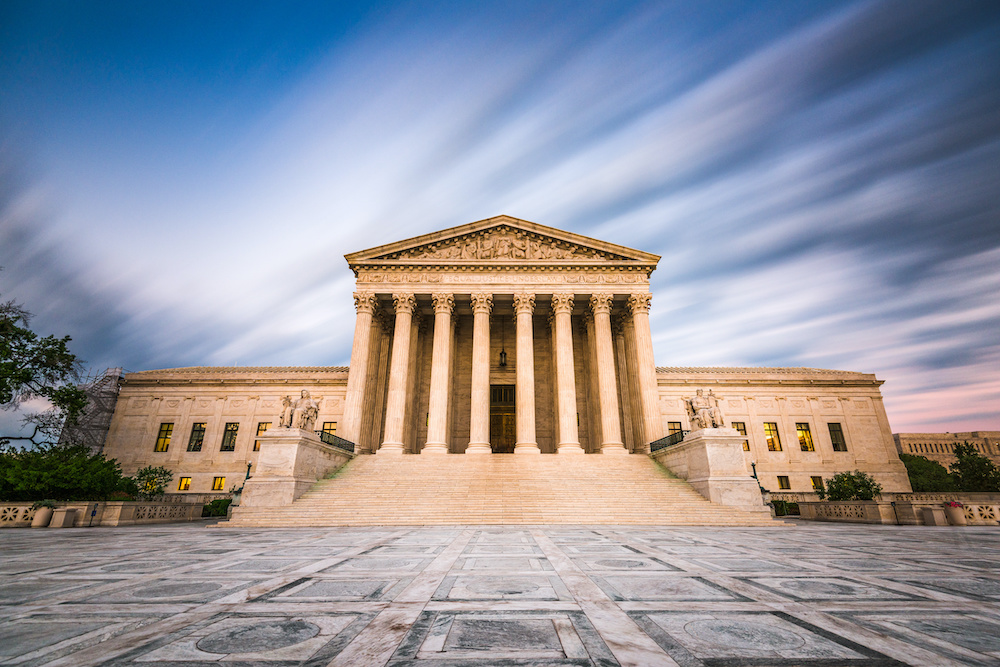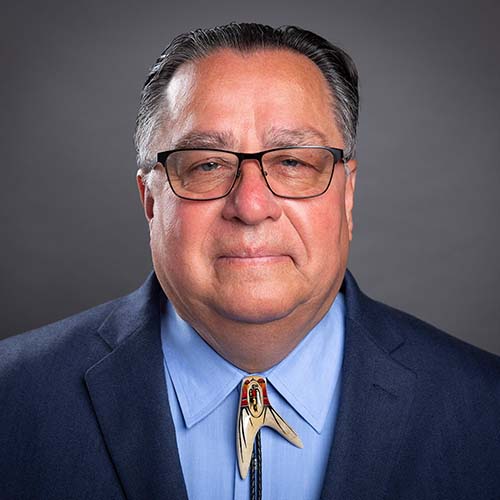
- Details
- By Neely Bardwell
The U.S. Supreme Court on Monday declined to hear a challenge to North Dakota’s legislative map, affirming one Native-majority district and dismissing an appeal regarding another.
The high court affirmed a lower court decision that preserves North Dakota House District 4A, which follows the borders of the Fort Berthold Reservation. The ruling also dismissed an appeal with respect to subdistrict 9A, which includes the Turtle Mountain Reservation. The high court did not explain its reasoning behind the decision.
The lawsuit, Walen v. Burgum, began in Feb. 2022, when Republican officials Charles Walen and Paul Henderson filed suit to dissolve the newly created Native-majority districts. The Mandan, Hidatsa, and Arikara (MHA) Nation and tribal citizens intervened to defend subdistrict 4A.
The MHA Nation had advocated for the subdistrict during North Dakota’s 2021 redistricting process, despite a state committee’s refusal to hold public hearings on reservations. The legislature ultimately approved a map that included House District 4A, which follows reservation boundaries.
“The MHA Nation is pleased that the Supreme Court has upheld North Dakota's voter redistricting legislation," MHA Nation Chairman Mark N. Fox said in a statement. "The legislation gives the MHA Nation a voice in the state legislature by redrawing fair districting voting lines. This win strengthens the civil rights of every citizen in the state and allows rural and reservation voters an equal opportunity to elect the person they want to represent their community.”
In Dec. 2024, the U.S. Solicitor General supported the lower court’s finding that Section 2 of the Voting Rights Act required the creation of District 4A.
The case was one of two recent voting rights challenges in North Dakota. In a separate lawsuit, a federal judge ordered new boundaries for Districts 9A and 9B for the 2024 election following a challenge by the Turtle Mountain Band of Chippewa.
The Native American Rights Fund, Campaign Legal Center, and the Law Office of Bryan L. Sells, LLC, represented the Indigenous parties in both cases.
Editor’s Note: An earlier version of this story incorrectly named Doug Olson and David Andahl as the plaintiffs. The plaintiffs were Charles Walen and Paul Henderson. The story has also been updated to clarify that the Supreme Court's decision specifically affirmed District 4A while dismissing an appeal regarding District 9A.
More Stories Like This
50 Years of Self-Determination: How a Landmark Act Empowered Tribal Sovereignty and Transformed Federal-Tribal RelationsNavajo Nation President Nygren Files in Court to Halt Removal Legislation
Alcatraz Sunrise Gathering Marks 50 Years of Indigenous Activism
Navajo Nation Vice President Distances Herself From President After Removal Resolution
Navajo Council Speaker Introduces Legislation to Remove Navajo Nation President, Vice President Amid Ethics Complaint
Help us tell the stories that could save Native languages and food traditions
At a critical moment for Indian Country, Native News Online is embarking on our most ambitious reporting project yet: "Cultivating Culture," a three-year investigation into two forces shaping Native community survival—food sovereignty and language revitalization.
The devastating impact of COVID-19 accelerated the loss of Native elders and with them, irreplaceable cultural knowledge. Yet across tribal communities, innovative leaders are fighting back, reclaiming traditional food systems and breathing new life into Native languages. These aren't just cultural preservation efforts—they're powerful pathways to community health, healing, and resilience.
Our dedicated reporting team will spend three years documenting these stories through on-the-ground reporting in 18 tribal communities, producing over 200 in-depth stories, 18 podcast episodes, and multimedia content that amplifies Indigenous voices. We'll show policymakers, funders, and allies how cultural restoration directly impacts physical and mental wellness while celebrating successful models of sovereignty and self-determination.
This isn't corporate media parachuting into Indian Country for a quick story. This is sustained, relationship-based journalism by Native reporters who understand these communities. It's "Warrior Journalism"—fearless reporting that serves the 5.5 million readers who depend on us for news that mainstream media often ignores.
We need your help right now. While we've secured partial funding, we're still $450,000 short of our three-year budget. Our immediate goal is $25,000 this month to keep this critical work moving forward—funding reporter salaries, travel to remote communities, photography, and the deep reporting these stories deserve.
Every dollar directly supports Indigenous journalists telling Indigenous stories. Whether it's $5 or $50, your contribution ensures these vital narratives of resilience, innovation, and hope don't disappear into silence.
 The stakes couldn't be higher. Native languages are being lost at an alarming rate. Food insecurity plagues many tribal communities. But solutions are emerging, and these stories need to be told.
The stakes couldn't be higher. Native languages are being lost at an alarming rate. Food insecurity plagues many tribal communities. But solutions are emerging, and these stories need to be told.
Support independent Native journalism. Fund the stories that matter.
Levi Rickert (Potawatomi), Editor & Publisher

